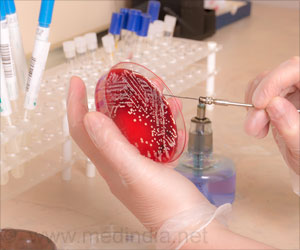An enzyme- LsrK kinase that assists in bacterial communication can be inhibited to stop the infection in its footsteps. This particular approach can help design Novel antibacterial drugs, finds a new study.

‘By stopping the Quorum sensing (QS) (a process of bacteria communication), a new range of antibacterial drugs can be created.’





Quorum sensing (QS) is a process of bacterial communication involved in the host colonization, virulence factors production, biofilm formation, and infection establishment. Consequently, the investigation of quorum quenching and inhibiting agents, which would interfere with the production and processing of QS mediators, has become a new strategy for developing antivirulence agents.QS is mediated by signalling molecules called autoinducers (AI) in a population density-dependent manner. The AI-2 signaling molecule is, derived from precursor 4,5-dihydroxy-2,3-pentanedione (DPD), involved in both intraspecies as well as in interspecies communication. LsrK is a kinase involved in the phosphorylation of AI-2 molecules, which (i.e., the phosphorylated form of AI-2) further regulates the QS pathway. Thus, inhibiting LsrK can lead to quorum sensing inactivation and interfere with the pathogenesis.
There are no reported inhibitors or protein structure of LsrK (until 2018). Thus, University of Eastern Finland researchers initiated the drug design efforts by modeling the LsrK protein structure using computational methods. The modeled protein structure was used for the screening of the compound library available at the Institute for Molecular Medicine Finland. The prioritized hits were tested in experimental assays for LsrK inhibition at the University of Helsinki. This study resulted in two primary hits, which were further confirmed by an analog-based approach. This analog approach resulted in four more hits of micromolar activity against LsrK.
The identified LsrK inhibitors through this study are the first class of LsrK inhibitors reported to date. These hits will be further optimized to achieve high affinity and function as useful tools for improving our understanding towards inhibition of LsrK in the AI-2 pathway and its significance as a potential antivirulence strategy.
Considering the limited knowledge about the LsrK structure, our study offers a great overview of the behavior of the protein and a perfect starting point to understand better the protein-substrate dynamics and how to interfere with it.
Advertisement











